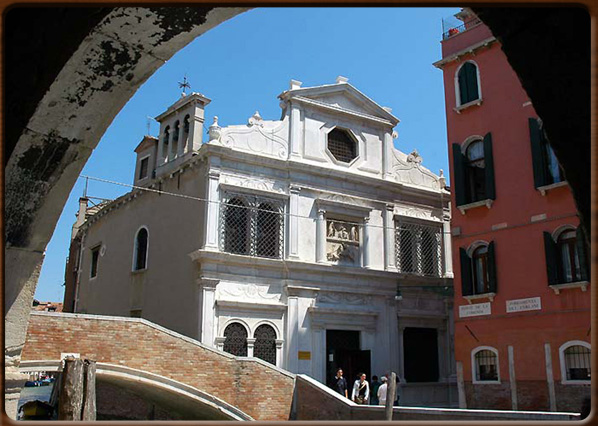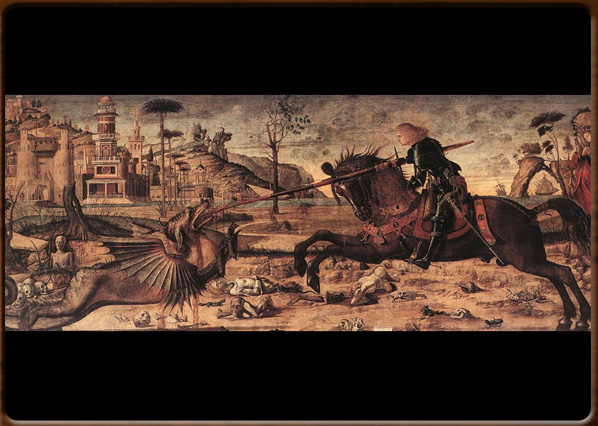
San Giorgio degli Schiavoni School.

Saint George and the Dragon, 1502, V. Carpaccio.


No video
Since ancient times Dalmatia enjoyed frequent political links and consistent trade relations Venice, reaching a peak in the 15th Century when all the coastal regions of Dalmatia passed under the dominion of the Serenissima.
Immigrant Dalmatians in Venice were better known as “Schiavoni”. The Venetian term “sciavo” meant a servant-slave, while “sciavòn” meant a Slav: the name “Schiavoni” was thus an obvious racist term.
Perhaps this prejudice helped strengthen the bonds of solidarity among Dalmatian immigrants. The result was the “Nation Dalmata”, an association of subjects of the Venetian Republic whose could trace their origins to the other side of the Adriatic.
Most were sailors with the Venetian fleet (and considered some of the best) or ran small businesses. Their first provisional headquarters was the church of San Giovanni del Tempio, now the Chiesa dei Cavalieri di Malta.
In the middle of the 1400s, however, the association urgently needed to find a new location where they could assemble and celebrate their identity and culture. They therefore presented a supplication to the Venetian government asking for the right to form a Scuola.
This document is still preserved in the Doge’s Palace and clearly indicates the dire straits that the sailors from along the Dalmatian coast faced in Venice: no assistance and desperately needing help. It also bears witness to the considerable number of Dalmatians living in the lagoon and the services many of them rendered the Serenissima.
On 24th March 1451, after the approval by the Council of Ten, the Scuola di San Giorgio degli Schiavoni was founded with the official purpose of collecting and offering solidarity under the protection of Saints George, Jerome and Tryphon to anyone in need, even if not a member of the Scuola, provided he or she was a Dalmatian. The "Scuola" was based in the former hospital of Santa Caterina and the first funds collected among its members were used to restore the building.
The Mariegola was accepted and approved by the Council of Ten on 19th May 1451.
The Scuola degli Schiavoni has played an important part in the city’s social and artistic history, despite not having large resources. Its fame was increased by the donation in 1502 of the relics of St. George and, in the same year, the delivery of a large cycle of paintings dedicated to the three patron saints of the Scuola by Carpaccio, the most famous and talented painter of the time.
The Scuola di San Giorgio degli Schiavoni has managed to remain intact, with all its documents and artistic heritage over the centuries, thanks to the fact that it obtained in 1807 shortly after the fall of the Republic of Venice an exception to the Napoleonic decree that abolished all Venetian schools.
1300 - 1400 - - rev. 0.1.5